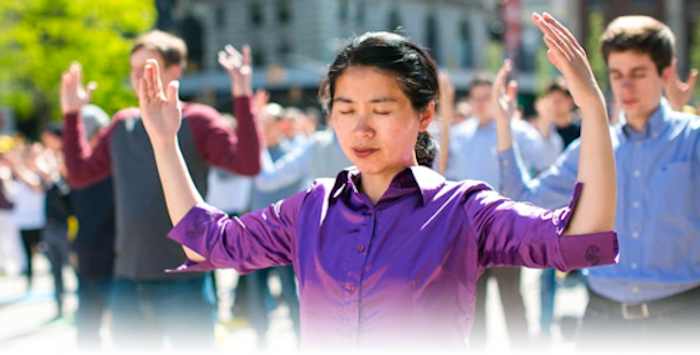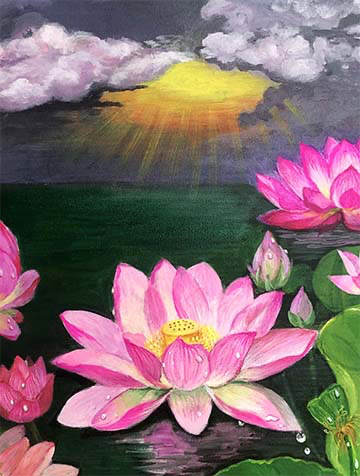(Minghui.org) China is known as shenzhou (a divine land) for its long and rich spiritual history. But things have changed dramatically in the decades since the Chinese Communist Party (CCP) seized power in 1949.
During the infamous Cultural Revolution, countless temples, Taoist monasteries, churches, and historic sites were demolished. In recent years, some of the remaining cultural heritage sites have become tourist destinations to generate profit. These events have pushed the general public further and further away from traditional values.
We’d like to retrace China’s history and legacy, hoping to find new perspectives on mankind, our society, and more.
(Continued from Part 2)
Levitation in Broad Daylight
In Legend of Immortals, Ge Hong documented numerous accounts of people who achieved the Tao and levitated in broad daylight. Let’s look at the legend of Xie Ziran, the only Taoist whose levitation was recorded in orthodox history.
This happened in 794, during the era of Emperor Dezong in the Tang Dynasty. Xie, who was 27 at the time, levitated in front of thousands of people at Guozhou (in today’s Nanchong City, Sichuan Province).
According to Taiping Guangji, Xie had been a very tranquil child. Peaceful and polite, she enjoyed reading and memorizing Tao Te Ching. Her father Xie Huan, originally from Yanzhou, lived in Guozhou and was a local official. Her mother was from a prestigious family in Yizhong.
Between the ages of 7 and 10, Xie traveled with two nuns, one after the other, to practice cultivation. After returning home, she moved into Laozi’s Temple in a nearby mountain to live. One day when she was 14, the food suddenly seemed disgusting to her, like maggots. So from that point on, she stopped eating.
At that time, her father had been traveling for a few years in other places. When he returned home, he couldn’t accept the sight of his daughter not eating and considered it an illusion. He said, “Our family has followed Confucianism for generations. Anything outside orthodox Confucian teachings are unacceptable. How can we allow such witchcraft?” He locked his daughter in a room for over 40 days. However, when Xie was released, her father was surprised to discover that she was even more pure and refreshed.
In 790, when Xie was 23, Han Yi became the new governor. He suspected that Xie was just pretending not to eat, so he invited her to live in a room in the government compound. When Xie came out of the room several months later, she looked just the same. Her voice was still clear and vibrant. Han and his entire family visited Xie and he was so astonished by her that he asked his daughter Han Ziming to learn from Xie.
In 793, Li Jian became the new governor. In the following year, Xie moved to a Taoist temple on March 3 (Lunar calendar). That day was bright and magnificent, different from other days. Xie said that some deities and divine beings were gathering on that day. The deer in the forest even behaved differently and many fawns weren’t afraid to peacefully interact with people.
Xie was a serious person and didn’t talk casually about Taoist cultivation, even to her own parents. Because the governor Li was very devout in Taoism, Xie said a few words to him. “When it comes to reciting scripture, one needs to do it wholeheartedly. The number of scriptures recited is not that important,” she explained. “If someone cultivates the Tao but gives up part way, they will lose more than those who didn’t even start cultivating the Tao. That is why one has to be very careful!”
By then, Xie had not eaten for 13 years. On November 9, 794, she went to the government compound to bid farewell to Li, and said, “I will leave in the middle of the month.” From then on, she no longer went to the meditation room.
Xie departed by levitating in broad daylight on the morning of November 20, from above Jinquan Temple. Thousands of people watched it happen. Her grandmother, mother, younger sister Xie Zirou, and disciple Li Sheng heard her final words, “Only by cultivating diligently can one achieve the Tao.”
Shortly afterwards, the mountain was covered by colorful clouds. For a long time, there was the sound of celestial music and a special fragrance. Several pieces of clothing and a hairpiece she often wore were left behind on her bed. They were placed there as usual, as though she’d left them there.
After Xie levitated, people saw the following sentences inscribed on a wall in the hall:
To whom it may concern, family and relatives I had,
please take good care of yourself and do not feel sad;
Cultivating your virtue and practicing kindness,
by obeying the precepts and reciting the scriptures you will make progress.
After many tribulations,
you will reach your destination;
Somehow in the future on the pure land with vast plains,
may we meet each other again.
Governor Li and military officer Wei Gao reported all this to Emperor Dezong. The emperor issued an edict in praise of Xie. (Sichuan Provincial Local History Office published the edict online.)
Li then erected a monument in Jinquan Temple that described Xie’s story. He also wrote The Legend of the Eastern Immortal that recorded her story in detail. This book was lost, but the New Book of Tang, an orthodox history book, referenced the book and documented its abstract. Even Han Yu, one of the greatest scholars in the Tang Dynasty, believed that the story of Xie was real, and mentioned it in a poem.
After the Tang Dynasty, legends of miracles were also documented in later dynasties. Ji Gong, a renowned monk during the Song Dynasty, transported huge logs from Sichuan to Hang Zhou through the river using supernormal abilities. Qiu Chuji, a famous Taoist in the Song Dynasty, traveled a long distance to meet Genghis Khan in the desert, and successfully stopped his slaughter. Similarly, Zhang Sanfeng created tai chi and left countless legends during the Ming Dynasty.
Levitation has also been recorded in Western society by those who followed spiritual paths in the Western tradition. The Catholic Church documented over 70 occasions of levitation by St. Joseph of Cupertino. Similar miracles were also recorded about St. Teresa of Avila and others.
For thousands of years, people have been wondering where we came from, why we are here, and more importantly, what we will become. The incidents mentioned above are intriguing. But what do they mean for us?
(To be continued)
Views expressed in this article represent the author's own opinions or understandings. All content published on this website are copyrighted by Minghui.org. Minghui will produce compilations of its online content regularly and on special occasions.
Category: Traditional Culture








